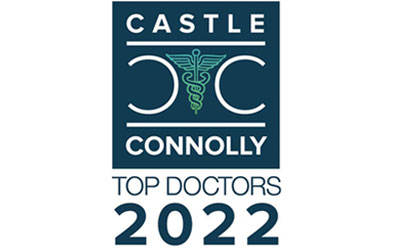Prostate Cancer
General Information About Prostate Cancer
Key Points for This Section
- Prostate cancer is a disease in which malignant (cancer) cells form in the tissues of the prostate.
- Possible signs of prostate cancer include a weak flow of urine or frequent urination.
- Tests that examine the prostate and blood are used to detect (find) and diagnose prostate cancer.
- Certain factors affect prognosis (chance of recovery) and treatment options.
Prostate cancer is a disease in which malignant (cancer) cells form in the tissues of the prostate.
The prostate is a gland in the male reproductive system located just below the bladder (the organ that collects and empties urine) and in front of the rectum (the lower part of the intestine). It is about the size of a walnut and surrounds part of the urethra (the tube that empties urine from the bladder). The prostate gland produces fluid that makes up part of the semen.
Prostate cancer is found mainly in older men. As men age, the prostate may get bigger and block the urethra or bladder. This may cause difficulty in urination or can interfere with sexual function. The condition is called benign prostatic hyperplasia (BPH), and although it is not cancer, surgery may be needed to correct it. The symptoms of benign prostatic hyperplasia or of other problems in the prostate may be similar to symptoms of prostate cancer.
Possible signs of prostate cancer include a weak flow of urine or frequent urination.
These and other symptoms may be caused by prostate cancer. Other conditions may cause the same symptoms. A doctor should be consulted if any of the following problems occur:
- Weak or interrupted flow of urine.
- Frequent urination (especially at night).
- Trouble urinating.
- Pain or burning during urination.
- Blood in the urine or semen.
- A pain in the back, hips, or pelvis that doesn't go away.
- Painful ejaculation.
Tests that examine the prostate and blood are used to detect (find) and diagnose prostate cancer.
The following tests and procedures may be used:
- Digital rectal exam (DRE): An exam of the rectum. The doctor or nurse inserts a lubricated, gloved finger into the rectum and feels the prostate through the rectal wall for lumps or abnormal areas.
- Transrectal ultrasound: A procedure in which a probe that is about the size of a finger is inserted into the rectum to check the prostate. The probe is used to bounce high-energy sound waves (ultrasound) off internal tissues or organs and make echoes. The echoes form a picture of body tissues called a sonogram. Transrectal ultrasound may be used during a biopsy procedure.
- Biopsy: The removal of cells or tissues so they can be viewed under a microscope by a pathologist. The pathologist will examine the biopsy sample to check for cancer cells and determine the Gleason score. The Gleason score ranges from 2-10 and describes how likely it is that a tumor will spread. The lower the number, the less likely the tumor is to spread. There are 2 types of biopsy procedures used to diagnose prostate cancer:
- Transrectal biopsy: The removal of tissue from the prostate by inserting a thin needle through the rectum and into the prostate. This procedure is usually done using transrectal ultrasound to help guide the needle. A pathologist views the tissue under a microscope to look for cancer cells.
- Transperineal biopsy: The removal of tissue from the prostate by inserting a thin needle through the skin between the scrotum and rectum and into the prostate. A pathologist views the tissue under a microscope to look for cancer cells.
Certain factors affect prognosis (chance of recovery) and treatment options.
The prognosis (chance of recovery) and treatment options depend on the following:
- The stage of the cancer (whether it affects part of the prostate, involves the whole prostate, or has spread to other places in the body).
- The patient’s age and health.
- Whether the cancer has just been diagnosed or has recurred (come back).
Prognosis also depends on the Gleason score and the level of PSA.
Stages of Prostate Cancer
Key Points for This Section
- After prostate cancer has been diagnosed, tests are done to find out if cancer cells have spread within the prostate or to other parts of the body.
- There are three ways that cancer spreads in the body.
- The following stages are used for prostate cancer:
- Stage I
- Stage II
- Stage III
- Stage IV
After prostate cancer has been diagnosed, tests are done to find out if cancer cells have spread within the prostate or to other parts of the body.
The process used to find out if cancer has spread within the prostate or to other parts of the body is called staging. The information gathered from the staging process determines the stage of the disease. It is important to know the stage in order to plan treatment. The following tests and procedures may be used in the staging process:
- Radionuclide bone scan: A procedure to check if there are rapidly dividing cells, such as cancer cells, in the bone. A very small amount of radioactive material is injected into a vein and travels through the bloodstream. The radioactive material collects in the bones and is detected by a scanner.
- MRI (magnetic resonance imaging): A procedure that uses a magnet, radio waves, and a computer to make a series of detailed pictures of areas inside the body. This procedure is also called nuclear magnetic resonance imaging (NMRI).
- Pelvic lymphadenectomy: A surgical procedure to remove the lymph nodes in the pelvis. A pathologist views the tissue under a microscope to look for cancer cells.
- CT scan (CAT scan): A procedure that makes a series of detailed pictures of areas inside the body, taken from different angles. The pictures are made by a computer linked to an x-ray machine. A dye may be injected into a vein or swallowed to help the organs or tissues show up more clearly. This procedure is also called computed tomography, computerized tomography, or computerized axial tomography.
- Seminal vesicle biopsy: The removal of fluid from the seminal vesicles (glands that produce semen) using a needle. A pathologist views the fluid under a microscope to look for cancer cells.
The stage of the cancer is based on the results of the staging and diagnostic tests, including the prostate specific antigen (PSA) test and the original tumor biopsy. The biopsy is used to determine the Gleason score. The Gleason score ranges from 2-10 and describes how different the cancer cells look from normal cells and how likely it is that the tumor will spread. The lower the number, the less likely the tumor is to spread.
There are three ways that cancer spreads in the body.
The three ways that cancer spreads in the body are:
- Through tissue. Cancer invades the surrounding normal tissue.
- Through the lymph system. Cancer invades the lymph system and travels through the lymph vessels to other places in the body.
- Through the blood. Cancer invades the veins and capillaries and travels through the blood to other places in the body.
When cancer cells break away from the primary (original) tumor and travel through the lymph or blood to other places in the body, another (secondary) tumor may form. This process is called metastasis. The secondary (metastatic) tumor is the same type of cancer as the primary tumor. For example, if breast cancer spreads to the bones, the cancer cells in the bones are actually breast cancer cells. The disease is metastatic breast cancer, not bone cancer.
The following stages are used for prostate cancer:
Stage I
In stage I, cancer is found in the prostate only. The cancer:
- is found by needle biopsy (such as for a high PSA level) or in a small amount of tissue during surgery for other reasons (such as benign prostatic hyperplasia). The PSA level is lower than 10 and the Gleason score is 6 or lower; or
- is found in one-half or less of one lobe of the prostate. The PSA level is lower than 10 and the Gleason score is 6 or lower; or
- cannot be felt during a digital rectal exam and is not visible by imaging. Cancer is found in one-half or less of one lobe of the prostate. The PSA level and the Gleason score are not known.
Stage II
In stage II, cancer is more advanced than in stage I, but has not spread outside the prostate. Stage II is divided into stage IIA and stage IIB.
In stage IIA, cancer:
- is found by needle biopsy (such as for a high PSA level) or in a small amount of tissue during surgery for other reasons (such as benign prostatic hyperplasia). The PSA level is lower than 20 and the Gleason score is 7; or
- is found by needle biopsy (such as for a high PSA level) or in a small amount of tissue during surgery for other reasons (such as benign prostatic hyperplasia). The PSA level is at least 10 but lower than 20 and the Gleason score is 6 or lower; or
- is found in one-half or less of one lobe of the prostate. The PSA level is at least 10 but lower than 20 and the Gleason score is 6 or lower; or
- is found in one-half or less of one lobe of the prostate. The PSA level is lower than 20 and the Gleason score is 7; or
- is found in more than one-half of one lobe of the prostate. The PSA level is lower than 20 and the Gleason score is 7 or lower; or
- is found in more than one-half of one lobe of the prostate. The PSA level and the Gleason score are not known.
In stage IIB, cancer:
- is found in both lobes of the prostate. The PSA can be any level and the Gleason score can range from 2 to 10; or
- cannot be felt during a digital rectal exam and is not visible by imaging, and the tumor has not spread outside the prostate. The PSA level is 20 or higher and the Gleason score can range from 2 to 10; or
- cannot be felt during a digital rectal exam and is not visible by imaging, and the tumor has not spread outside the prostate. The PSA can be any level and the Gleason score is 8 or higher.
Stage III
In stage III, cancer has spread beyond the outer layer of the prostate on one or both sides and may have spread to the seminal vesicles. The PSA can be any level and the Gleason score can range from 2 to 10. Stage IV
In stage IV, the PSA can be any level and the Gleason score can range from 2 to 10. Also, cancer:
- has spread beyond the seminal vesicles to nearby tissue or organs, such as the rectum, bladder, or pelvic wall; or
- may have spread to the seminal vesicles or to nearby tissue or organs, such as the rectum, bladder, or pelvic wall. Cancer has spread to nearby lymph nodes; or
- has spread to distant parts of the body, which may include lymph nodes or bones. Prostate cancer often spreads to the bones.
Recurrent Prostate Cancer
Recurrent prostate cancer is cancer that has recurred (come back) after it has been treated. The cancer may come back in the prostate or in other parts of the body.
Treatment Option Overview
Key Points for This Section
- There are different types of treatment for patients with prostate cancer.
- Five types of standard treatment are used:
- Watchful waiting
- Surgery
- Radiation therapy
- Hormone therapy
- Chemotherapy
- New types of treatment are being tested in clinical trials.
- Cryosurgery
- Biologic therapy
- High-intensity focused ultrasound
- Proton beam radiation therapy
- Patients may want to think about taking part in a clinical trial.
- Patients can enter clinical trials before, during, or after starting their cancer treatment.
- Follow-up tests may be needed.
There are different types of treatment for patients with prostate cancer.
Different types of treatment are available for patients with prostate cancer. Some treatments are standard (the currently used treatment), and some are being tested in clinical trials. A treatment clinical trial is a research study meant to help improve current treatments or obtain information on new treatments for patients with cancer. When clinical trials show that a new treatment is better than the standard treatment, the new treatment may become the standard treatment. Patients may want to think about taking part in a clinical trial. Some clinical trials are open only to patients who have not started treatment.
Five types of standard treatment are used:
Watchful waiting
Watchful waiting is closely monitoring a patient’s condition without giving any treatment until symptoms appear or change. This is usually used in older men with other medical problems and early- stage disease.
Surgery
Patients in good health are usually offered surgery as treatment for prostate cancer. The following types of surgery are used:
- Pelvic lymphadenectomy: A surgical procedure to remove the lymph nodes in the pelvis. A pathologist views the tissue under a microscope to look for cancer cells. If the lymph nodes contain cancer, the doctor will not remove the prostate and may recommend other treatment.
- Radical prostatectomy: A surgical procedure to remove the prostate, surrounding tissue, and seminal vesicles. There are 2 types of radical prostatectomy:
- Retropubic prostatectomy: A surgical procedure to remove the prostate through an incision (cut) in the abdominal wall. Removal of nearby lymph nodes may be done at the same time.
- Perineal prostatectomy: A surgical procedure to remove the prostate through an incision (cut) made in the perineum (area between the scrotum and anus). Nearby lymph nodes may also be removed through a separate incision in the abdomen.
- Transurethral resection of the prostate (TURP): A surgical procedure to remove tissue from the prostate using a resectoscope (a thin, lighted tube with a cutting tool) inserted through the urethra. This procedure is sometimes done to relieve symptoms caused by a tumor before other cancer treatment is given. Transurethral resection of the prostate may also be done in men who cannot have a radical prostatectomy because of age or illness.
Impotence and leakage of urine from the bladder or stool from the rectum may occur in men treated with surgery. In some cases, doctors can use a technique known as nerve-sparing surgery. This type of surgery may save the nerves that control erection. However, men with large tumors or tumors that are very close to the nerves may not be able to have this surgery.
The penis may be 1 to 2 centimeters shorter after a radical prostatectomy. The exact reason for this is not known.
Inguinal hernia is bulging of fat or part of the small intestine through weak muscles into the groin. Inguinal hernia may occur more often in men treated with radical prostatectomy than in men who have some other types of prostate surgery, radiation therapy, or prostate biopsy alone. It is most likely to occur within the first 2 years after radical prostatectomy.
Radiation therapy
Radiation therapy is a cancer treatment that uses high-energy x-rays or other types of radiation to kill cancer cells or keep them from growing. There are two types of radiation therapy. External radiation therapy uses a machine outside the body to send radiation toward the cancer. Internal radiation therapy uses a radioactive substance sealed in needles, seeds, wires, or catheters that are placed directly into or near the cancer. The way the radiation therapy is given depends on the type and stage of the cancer being treated.
There is an increased risk of bladder cancer and/or rectal cancer in men treated with radiation therapy.
Impotence and urinary problems may occur in men treated with radiation therapy.
Hormone therapy
Hormone therapy is a cancer treatment that removes hormones or blocks their action and stops cancer cells from growing. Hormones are substances produced by glands in the body and circulated in the bloodstream. In prostate cancer, male sex hormones can cause prostate cancer to grow. Drugs, surgery, or other hormones are used to reduce the production of male hormones or block them from working.
Hormone therapy used in the treatment of prostate cancer may include the following:
- Luteinizing hormone-releasing hormone agonists can prevent the testicles from producing testosterone. Examples are leuprolide, goserelin, and buserelin.
- Antiandrogens can block the action of androgens (hormones that promote male sex characteristics). Two examples are flutamide and nilutamide.
- Drugs that can prevent the adrenal glands from making androgens include ketoconazole and aminoglutethimide.
- Orchiectomy is a surgical procedure to remove one or both testicles, the main source of male hormones, to decrease hormone production.
- Estrogens (hormones that promote female sex characteristics) can prevent the testicles from producing testosterone. However, estrogens are seldom used today in the treatment of prostate cancer because of the risk of serious side effects.
Hot flashes, impaired sexual function, loss of desire for sex, and weakened bones may occur in men treated with hormone therapy. Other side effects include diarrhea, nausea, and pruritus (itching).
See Drugs Approved for Prostate Cancer for more information.
Chemotherapy
Chemotherapy is a cancer treatment that uses drugs to stop the growth of cancer cells, either by killing the cells or by stopping them from dividing. When chemotherapy is taken by mouth or injected into a vein or muscle, the drugs enter the bloodstream and can reach cancer cells throughout the body (systemic chemotherapy). When chemotherapy is placed directly into the cerebrospinal fluid, an organ, or a body cavity such as the abdomen, the drugs mainly affect cancer cells in those areas (regional chemotherapy). The way the chemotherapy is given depends on the type and stage of the cancer being treated.
See Drugs Approved for Prostate Cancer for more information.
New types of treatment are being tested in clinical trials.
This summary section describes treatments that are being studied in clinical trials. It may not mention every new treatment being studied. Information about clinical trials is available from the NCI Web site.
Cryosurgery
Cryosurgery is a treatment that uses an instrument to freeze and destroy prostate cancer cells. This type of treatment is also called cryotherapy.
Impotence and leakage of urine from the bladder or stool from the rectum may occur in men treated with cryosurgery.
Biologic therapy
Biologic therapy is a treatment that uses the patient’s immune system to fight cancer. Substances made by the body or made in a laboratory are used to boost, direct, or restore the body’s natural defenses against cancer. This type of cancer treatment is also called biotherapy or immunotherapy.
High-intensity focused ultrasound
High-intensity focused ultrasound is a treatment that uses ultrasound (high-energy sound waves) to destroy cancer cells. To treat prostate cancer, an endorectal probe is used to make the sound waves.
Proton beam radiation therapy
Proton beam radiation therapy is a type of high-energy, external radiation therapy that targets tumors with streams of protons (small, positively charged particles). This type of radiation therapy is being studied in the treatment of prostate cancer.
Patients may want to think about taking part in a clinical trial.
For some patients, taking part in a clinical trial may be the best treatment choice. Clinical trials are part of the cancer research process. Clinical trials are done to find out if new cancer treatments are safe and effective or better than the standard treatment.
Many of today's standard treatments for cancer are based on earlier clinical trials. Patients who take part in a clinical trial may receive the standard treatment or be among the first to receive a new treatment.
Patients who take part in clinical trials also help improve the way cancer will be treated in the future. Even when clinical trials do not lead to effective new treatments, they often answer important questions and help move research forward.
Patients can enter clinical trials before, during, or after starting their cancer treatment.
Some clinical trials only include patients who have not yet received treatment. Other trials test treatments for patients whose cancer has not gotten better. There are also clinical trials that test new ways to stop cancer from recurring (coming back) or reduce the side effects of cancer treatment.
Clinical trials are taking place in many parts of the country. See the Treatment Options section that follows for links to current treatment clinical trials. These have been retrieved from NCI's listing of clinical trials.
Follow-up tests may be needed.
Some of the tests that were done to diagnose the cancer or to find out the stage of the cancer may be repeated. Some tests will be repeated in order to see how well the treatment is working. Decisions about whether to continue, change, or stop treatment may be based on the results of these tests. This is sometimes called re-staging.
Some of the tests will continue to be done from time to time after treatment has ended. The results of these tests can show if your condition has changed or if the cancer has recurred (come back). These tests are sometimes called follow-up tests or check-ups.
Treatment Options by Stage
A link to a list of current clinical trials is included for each treatment section. For some types or stages of cancer, there may not be any trials listed. Check with your doctor for clinical trials that are not listed here but may be right for you.
Stage I Prostate Cancer
Treatment of stage I prostate cancer may include the following:
- Watchful waiting.
- Radical prostatectomy, usually with pelvic lymphadenectomy, with or without radiation therapy after surgery. It may be possible to remove the prostate without damaging nerves that are necessary for an erection.
- External-beam radiation therapy.
- Implant radiation therapy.
- A clinical trial of high-intensity focused ultrasound.
- A clinical trial testing new types of treatment.
Check for U.S. clinical trials from NCI's list of cancer clinical trials that are now accepting patients with stage I prostate cancer. For more specific results, refine the search by using other search features, such as the location of the trial, the type of treatment, or the name of the drug. General information about clinical trials is available from the NCI Web site.
Stage II Prostate Cancer
Treatment of stage II prostate cancer may include the following:
- Watchful waiting.
- Radical prostatectomy, with or without pelvic lymphadenectomy. Radiation therapy may be given after surgery. It may be possible to remove the prostate without damaging nerves that are necessary for an erection.
- External-beam radiation therapy with or without hormone therapy.
- Implant radiation therapy.
- A clinical trial of radiation therapy with or without hormone therapy.
- A clinical trial of ultrasound -guided cryosurgery.
- A clinical trial of high-intensity focused ultrasound.
- A clinical trial of proton beam radiation therapy.
- Clinical trials testing new types of treatment, such as hormone therapy followed by radical prostatectomy.
Check for U.S. clinical trials from NCI's list of cancer clinical trials that are now accepting patients with stage II prostate cancer. For more specific results, refine the search by using other search features, such as the location of the trial, the type of treatment, or the name of the drug. General information about clinical trials is available from the NCI Web site.
Stage III Prostate Cancer
Treatment of stage III prostate cancer may include the following:
- External-beam radiation therapy with or without hormone therapy.
- Hormone therapy.
- Radical prostatectomy, with or without pelvic lymphadenectomy. Radiation therapy may be given after surgery.
- Watchful waiting.
- Radiation therapy, hormone therapy, or transurethral resection of the prostate as palliative therapy to relieve symptoms caused by the cancer.
- A clinical trial of radiation therapy.
- A clinical trial of ultrasound -guided cryosurgery.
- A clinical trial testing new types of treatment.
Check for U.S. clinical trials from NCI's list of cancer clinical trials that are now accepting patients with stage III prostate cancer. For more specific results, refine the search by using other search features, such as the location of the trial, the type of treatment, or the name of the drug. General information about clinical trials is available from the NCI Web site.
Stage IV Prostate Cancer
Treatment of stage IV prostate cancer may include the following:
- Hormone therapy.
- External-beam radiation therapy with or without hormone therapy.
- Radiation therapy or transurethral resection of the prostate as palliative therapy to relieve symptoms caused by the cancer.
- Watchful waiting.
- A clinical trial of radical prostatectomy with orchiectomy.
Check for U.S. clinical trials from NCI's list of cancer clinical trials that are now accepting patients with stage IV prostate cancer. For more specific results, refine the search by using other search features, such as the location of the trial, the type of treatment, or the name of the drug. General information about clinical trials is available from the NCI Web site.
Treatment Options for Recurrent Prostate Cancer
Treatment of recurrent prostate cancer may include the following:
- Radiation therapy.
- Prostatectomy for patients initially treated with radiation therapy.
- Hormone therapy.
- Chemotherapy.
- Pain medication, external radiation therapy, internal radiation therapy with radioisotopes such as strontium-89, or other treatments as palliative therapy to lessen bone pain.
- A clinical trial of ultrasound -guided cryosurgery.
- A clinical trial of new anticancer drugs or biological therapy.
Check for U.S. clinical trials from NCI's list of cancer clinical trials that are now accepting patients with recurrent prostate cancer. For more specific results, refine the search by using other search features, such as the location of the trial, the type of treatment, or the name of the drug. General information about clinical trials is available from the NCI Web site.
To Learn More About Prostate Cancer
For more information from the National Cancer Institute about prostate cancer, see the following:
- Prostate Cancer Home Page
- What You Need to Know About™ Prostate Cancer
- Prostate Cancer Prevention
- Prostate Cancer Screening
- Prostate-Specific Antigen (PSA) Test
- Treatment Choices for Men with Early-Stage Prostate Cancer
- Drugs Approved for Prostate Cancer
- Cryosurgery in Cancer Treatment: Questions and Answers
For general cancer information and other resources from the National Cancer Institute, see the following:
- What You Need to Know About™ Cancer
- Understanding Cancer Series: Cancer
- Cancer Staging
- Chemotherapy and You: Support for People With Cancer
- Radiation Therapy and You: Support for People With Cancer
- Coping with Cancer: Supportive and Palliative Care
- Cancer Library
- Information For Survivors/Caregivers/Advocates
For more information about Prostate Cancer, please visit the National Cancer Institute.














